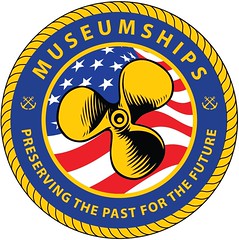
|
|
SUBSIM: The Web's #1 resource for all submarine & naval simulations since 1997
 |
SUBSIM: The Web's #1 resource for all submarine & naval simulations since 1997 |
|
|
 03-29-19, 05:09 PM
03-29-19, 05:09 PM
|
#1 |
|
Ocean Warrior
 |
Just think it through.
 If a contact's line is bending towards your heading, you can assume its closing. If the line is bending away from your heading, you can assume its opening. I use the word "assume" because the broadband trace only shows the relative bearing of the contact compared to your course and speed. That's why you need TMA. You figure out a rough course, speed, and range then tweak the solution over time to make it fit better. |

|

|
 03-31-19, 10:20 AM
03-31-19, 10:20 AM
|
#2 |
|
Swabbie
 Join Date: Nov 2016
Posts: 13
Downloads: 16
Uploads: 0
|
Yep, makes sense. Thank you!
|

|

|
 03-31-19, 07:59 PM
03-31-19, 07:59 PM
|
#3 |
|
Ocean Warrior
 |
Well, try not to concentrate too much on the broadband patterns.
 What you're seeing is the contact's bearing and its bearing rate over time. Low bearing rate (traces that are mostly vertical) usually mean that the contact is distant and/or mostly on the same course as you are. A trace that shows a lot of a curve towards the horizontal means the contact's bearing rate is changing. This could be due to speed, closer range, CPA, or a maneuver (aka, a Zig). When you see that big bend in your waterfall display, its usually a good time to check your solution to see if its holding up. 
|

|

|
 04-01-19, 03:45 PM
04-01-19, 03:45 PM
|
#4 |
|
Sub Test Pilot
|
I would also look at having a read up on the Red Book and Blue book of submarine tactics, but also a good one is timygoo TMA manual.
All can be found in the download section or at www.subguru.com
__________________
DONT FORGET if you like a post to nominate it by using the blue diamond    Find out about Museum Ships here: https://www.museumships.us/ Flickr for all my pictures: https://www.flickr.com/photos/131313936@N03/ Navy general board articles: https://www.navygeneralboard.com/author/aegis/ |

|

|
 |
|
|
